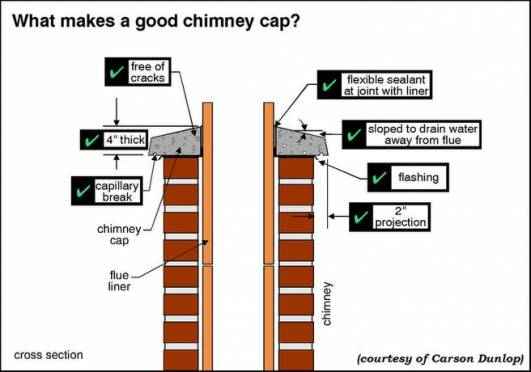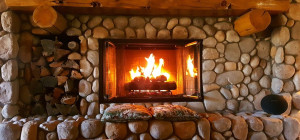A fireplace in your home is a very adorning addition, but the issues accompanying it can be a real pain. One such problem involves a leaky chimney.
A chimney leakage can be a very common and annoying problem in the household. This is because, if your chimney shows any signs of leakage, then it can be a major hazard in terms of:
- Insects
- Gas
- Corrosion
It can also play host to an array of unwanted problems.
Therefore, it becomes quite important to identify the reason for the leak to fix it. And the quicker you can do this, the better it is for your home.
A chimney leakage can be caused by a number of reasons, some of which include the following:
1. Missing Chimney Cover
One of the most obvious reasons for a leaky chimney is the absence of a cover on the top, which leads to direct inflow of rain and debris into the house. This can be harmful at a very serious level.
Here’s how.
Accumulation of debris tends to clog the chimney at the bottom. And a clogged chimney would lead to the inflow of smoke back into the house. Thus, the inhabitants of the house would harbor the risk of suffering from carbon monoxide (CO) poisoning, which might even lead to death.
As many as 4,000 people attend the accident and emergency departments in England every year owing to CO poisoning. And the death count has been estimated to be around 40 in England and Wales only.
The easiest way to get rid of this problem is by inserting a cap. To accomplish the task of finding the right fit, you would need to know two things about your chimney:
- The kind of flue your chimney has
- The right measurement
Once you have determined that, buying a chimney cap will be easy.
2. Faults with the Flashing
The metal strips that attach the chimney to the roof of your house are known as flashing. Among the materials they are made of, the ones widely used are:
- Aluminum
- Lead
- Galvanized or stainless steel
- Copper
- Lead-coated copper
Leaks in the flashing can be a result of:
- Rust
- Storms
- Wearing out
- Improper installation
Flashing leaks can cause a lot of unwanted damages. You can do two things to prevent this issue from shaping into a major one:
- You can seal the leak with a waterproof seal.
- You can get the old flashing replaced.
3. Cracks in the Chimney Crown
The crown is the cement surface sitting atop a chimney. It keeps rain and snow from entering the house through the chimney. Problem arises when the crown gets cracked and leaks moisture.
The crown material should be built in a way that it does not come in contact with the flue liner. This gap is closed by putting in a silicone caulk. But in most cases, the top of the chimney is sealed off with a mortar cap. The heat of the fire leads to an expansion in the material that the flue liner is made of. And this pops the mortar cap, causing a crack in the crown.
Another reason involves the freeze-thaw damage. During winter, water absorbed by the crown from rainfall freezes and thaws. This results in considerable damage to the crown, leading to cracks.
If that is the case with your chimney crown, you should get it repaired as quickly as possible.
4. Cracked mortar
Wearing out of the mortar is one of the most common causes of a chimney leak. The reasons involve the following:
- Even though the bricks and the stones the chimney is made of may last quite long, the mortar has a life cycle of around 25 years or less. When the mortar starts deteriorating, the chimney starts expelling moisture into the house.
- Freezing and thawing is another major problem that leads to cracks in the mortar, the same way it leads to cracking of the chimney crown.
It is quite important to get the mortar of your chimney replaced at the first signs of damage. This is because any delay might result in the collapse of your chimney.
It is always recommended to get your chimney inspected by an expert after regular intervals of time to ensure that even the early signs of damages are detected and taken proper care of. You can also hire a professional chimney sweep to keep your chimney clean to prevent any damage. This way, not only your chimney, but your home will stay protected as well.








